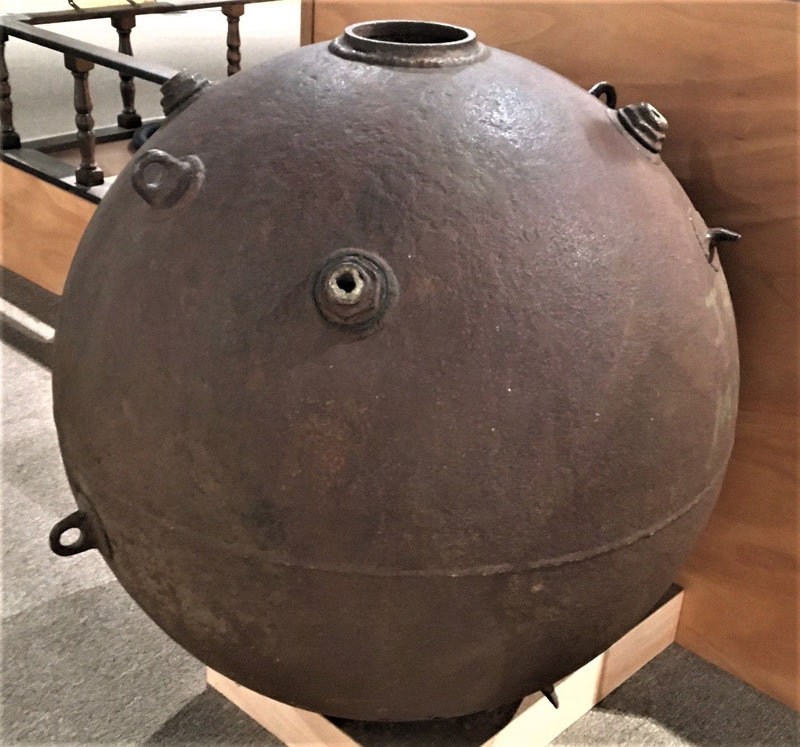19/02/2022 Stati Uniti, Oregon, Lincoln
“If you ever come across anything suspicious like this item, please do not pick it up, contact your local law enforcement agency for assistance”
Gleneden Beach, Oregon) – Post-war West Coast, about 1950. There’s a baby boom going on, and an economic boom is really just sparking. Tourism on the Oregon coast and Washington coast is kicking into life again (in some places for the first time). A new middle class and larger groups of people with some disposable income are discovering these beaches, and the world is just starting to calm its nerves after years of World War II. (Above: a Japanese mine found in Gleneden Beach in ’49, on display in Lincoln City. Courtesy North Lincoln County History Museum). The good times are just getting going, but there’s still some World War II dangers out there along the West Coast. Old mines from Japan and the U.S. are floating this way and occasionally landing on the beaches. Instruments of war meant to destroy ships at sea by surprise are still left out there – from both sides, actually (but it’s the Japanese mines that get all the press). Sometimes the spiked and thoroughly scary devices are found at sea; sometimes they wash up on beaches where tourists hang out.
This is part one of the two-part story (Terror of Post-War Mines on Beaches: Oregon, Washington Coast History (part two)
According to the April 1948 edition of the book series Military Review, in only the two years since the end of the war hundreds of mines were discovered off the west coast of the U.S., and 117 of them in and around the Washington coast and Oregon coast, “either at sea or on the Washington-Oregon beaches,” the book said.
Photo-Source: beachconnection.net
If you find anything that appears to be an explosive device, do not touch it, leave it where it is and call the police. We will contact the appropriate agencies to properly dispose of the item.
Dear editors, Biography of a bomb is aimed at highlighting the danger caused by unexploded bombs. Moreover, the most important aspect is that we work completely non profit, raising awerness about this topic is what drives us. We apologize if we make use of pictures in yours articles, but we need them to put a context in how findings are done. We will (and we always do) cite source and author of the picture. We thank you for your comprehension.





